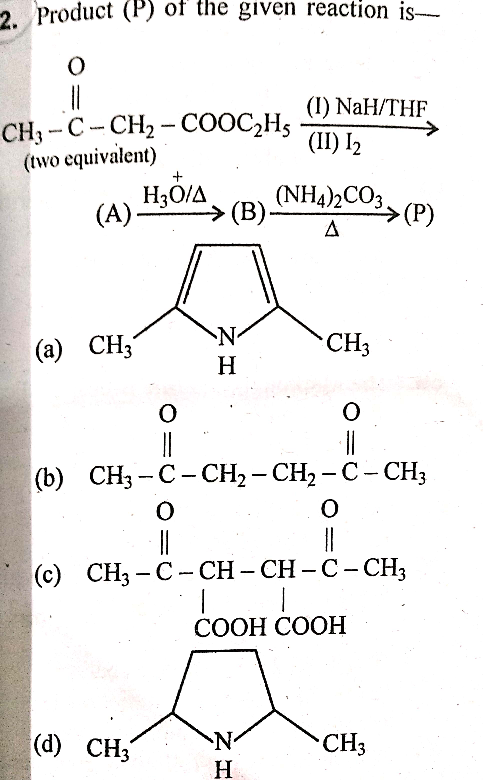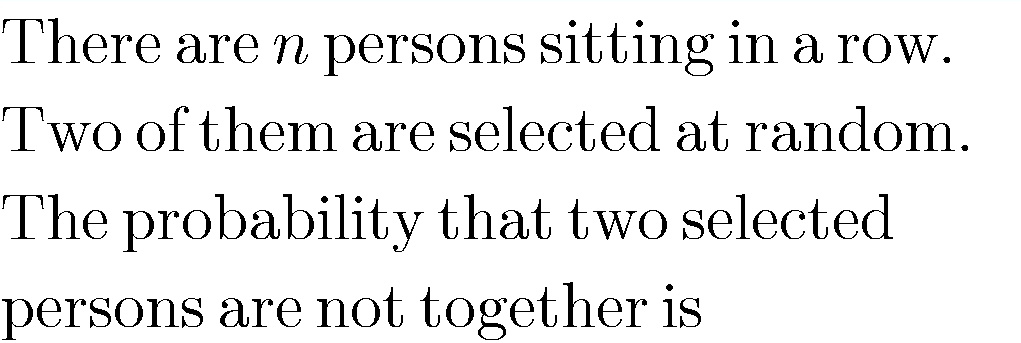
Question and Answers Forum
AllQuestion and Answers: Page 1474







Pg 1469 Pg 1470 Pg 1471 Pg 1472 Pg 1473 Pg 1474 Pg 1475 Pg 1476 Pg 1477 Pg 1478
|
Question and Answers Forum |
AllQuestion and Answers: Page 1474 |
| decompose the fraction F(x) =(x^n /(x^(2n) −1)) inside C(x) and R(x) |
| decompose inside C(x) the fraction F(x) =(1/((x^2 +1)^n )) with n integr natural and n≥1 |

|

|
| n men and n women should be arranged alternately in a row, how many ways can this be done? if the same should be done on a table, how many ways then? |
| prove that the equation Z^n =1 have exacly n roots given by Z_k =e^(i((2kπ)/n)) k∈[[0,n−1]] |
| let f(x) =∫_0 ^∞ ((cos(πxt))/((t^2 +3x^2 )^2 )) dt with x>0 1) find a explicit form for f(x) 2) find the value of ∫_0 ^∞ ((cos(πt))/((t^2 +3)^2 ))dt 3) let U_n =f(n) find nature of Σ U_n |
| let f(x) =∫_0 ^(+∞) (dt/((t^2 +x^2 )^3 )) with x>0 1) find a explicit form off (x) 1) calculate ∫_0 ^∞ (dx/((t^2 +3)^3 )) and ∫_0 ^∞ (dt/((t^2 +4)^3 )) 2) find the value of A(θ) =∫_0 ^∞ (dt/((t^2 +sin^2 θ)^3 )) with 0<θ<π. |

|
| 2[3×4+2×4] |
| calculate(2/(13))×2(1/4) |
| 6×2 |
| If α + β+ γ =180°, show that cos (α/2) + cos (β/2)+ cos (γ/2) = 4 cos ((β + γ)/4) cos ((γ + α)/4) cos ((α + β)/4). |
| lim_(n→∞) ((3^(n+2) −2.5^(n+1) )/(3^n −2.5^(n−1) )) |

|

|

|

|
| lim_(n→∞) (8^n /(2^(n+1) +3^(n+2) )) |
| 1)prove that arctan(a) +arctanb =arctan(((a+b)/(1−ab))) with ab≠1 2)find the value of S_N = Σ_(n=1) ^N (−1)^n arctan(((2n+1)/(n^2 +n−1))) |
| (U_n ) is a sequence wich verify u_n +u_(n+1) =(1/n^2 ) 1) find u_n interms of n 2) find lim_(n→+∞) u_n |
| A uniform rod ABC, weight 50N and length 4m rests with one end A on rough horizontal ground and is supported by a smooth peg at B where AB=2.5m. The peg is 2m from the ground. Find the reactions at A and at the peg. |
| A uniform rod AB, 3m long and weght 120N, rests in equilibrium with end A on a rough horizontal table and supported by a force P applied at its end B at right angles to the rod. The rod makes an angle of 3o° with the table. Find the force P, and the reaction at the floor. |
| calculate ∫_0 ^π ((2xsinx)/(3 +cos(2x)))dx . |
| If A and B are two non empty equivalent sets, then a possible value of n(A×B) is |
| find the common area of: { (((x^2 /3)+y^2 =1)),((x^2 +(y^2 /3)=1)) :} |
Pg 1469 Pg 1470 Pg 1471 Pg 1472 Pg 1473 Pg 1474 Pg 1475 Pg 1476 Pg 1477 Pg 1478 |